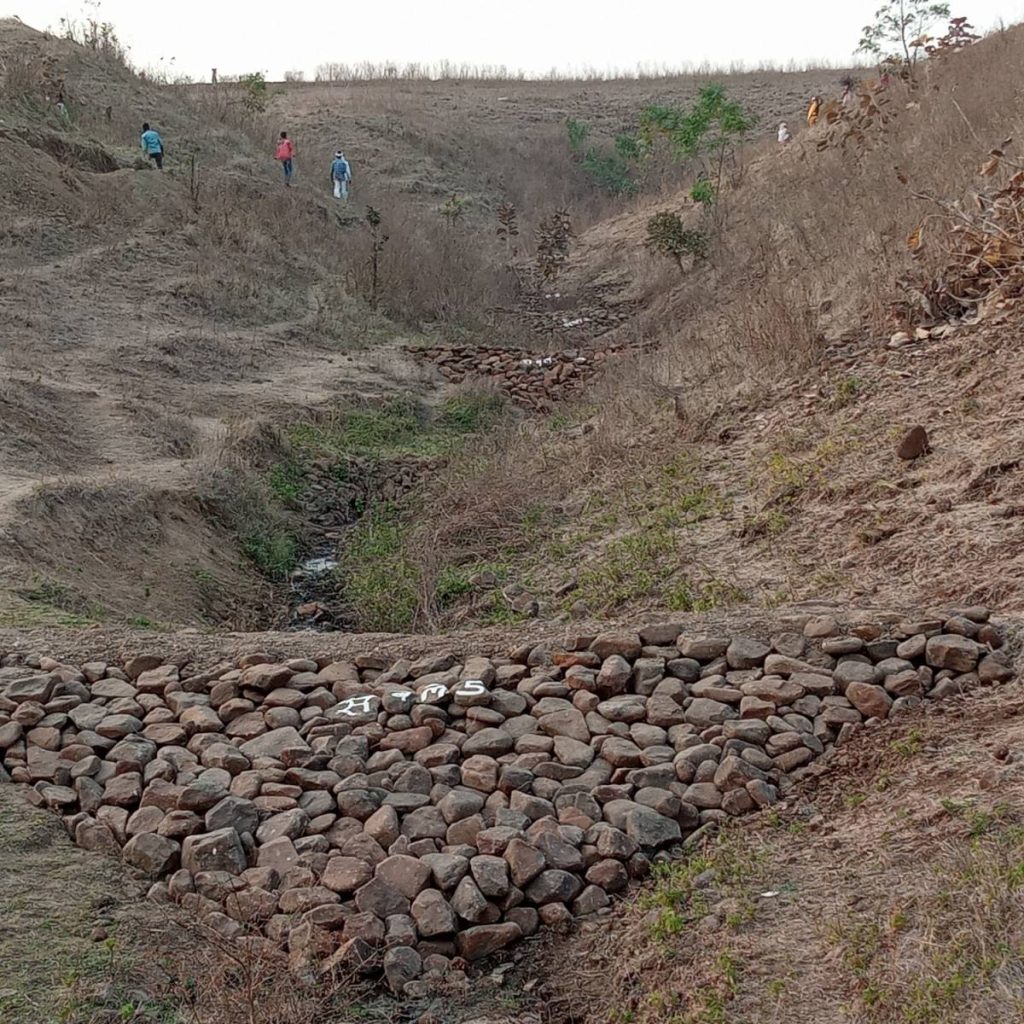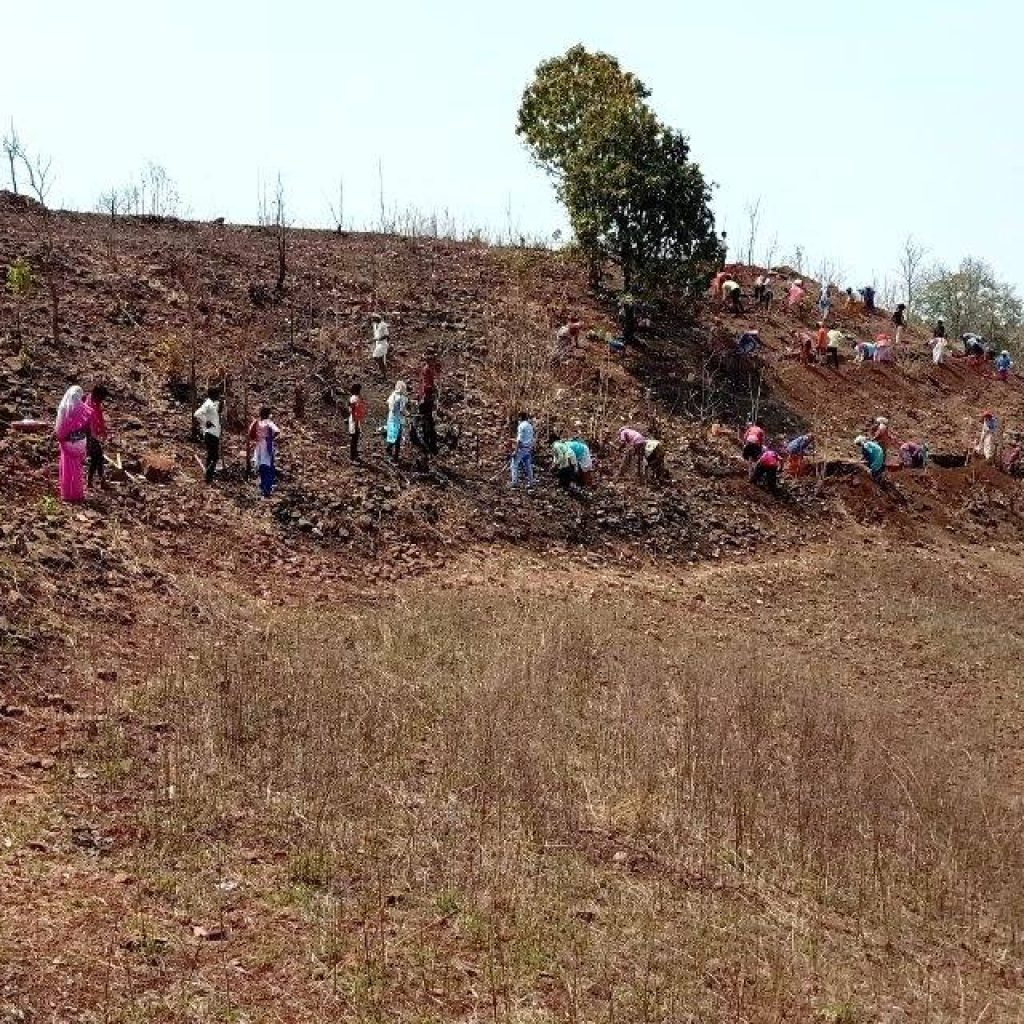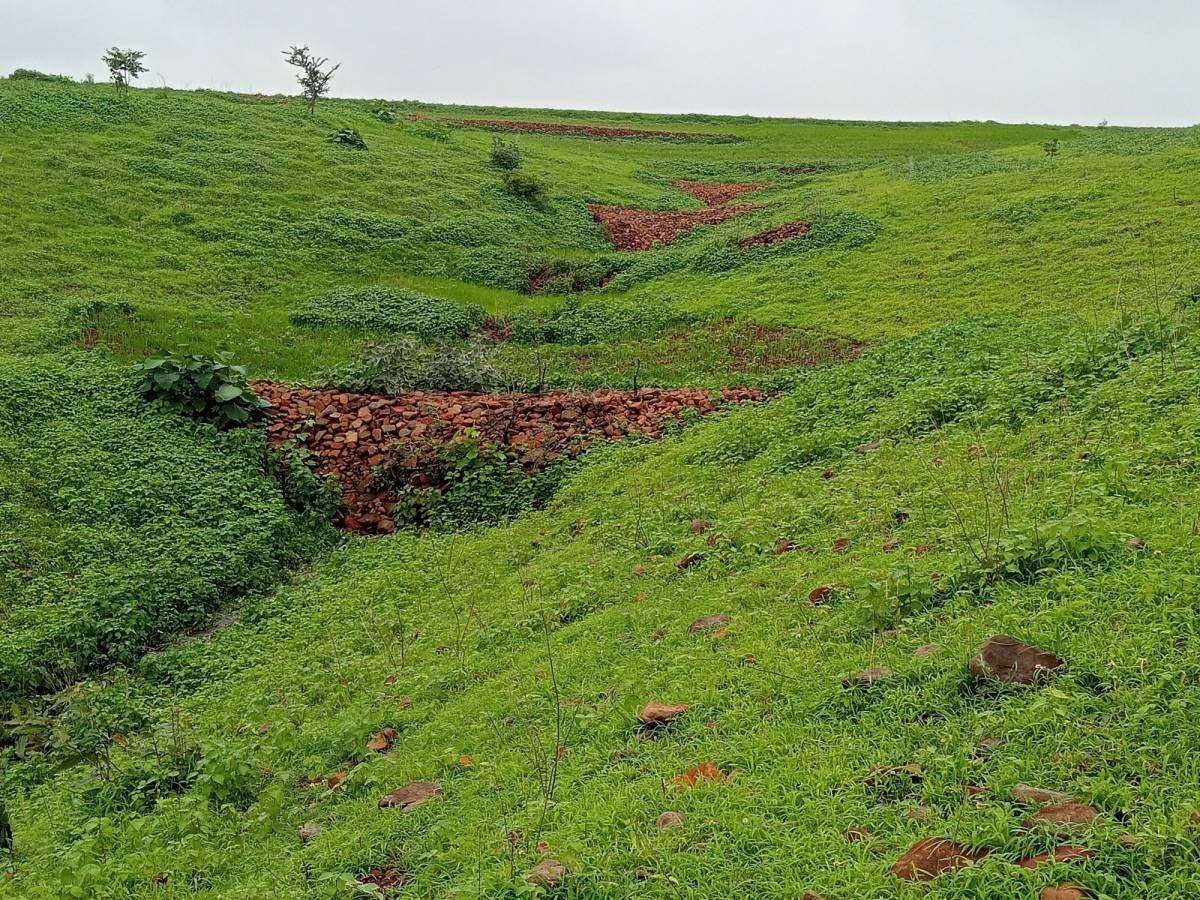With Minz’s assistance, Neelabai was able to avail a loan from the Janpad panchayat to get back her mortgaged land. She tripled the yield from her farms in a simple yet effective manner…reports MOHAMMAD ASIF SIDDIQUI
With the support of social organisations, tribal farmers of the Korku community in Indra Kheda, 55km from the Khandwa district headquarters in Madhya Pradesh, began to practice water-soil conservation, resulting in barren lands turning fertile with groundwater revival, which in turn increased yield.
Indra Kheda stands out from other villages in the same block of Vikas Khand as each house here has at least two saplings planted outside, to turn into full-fledged trees over time.
When 101/Reporters entered the village, the veranda of one house was adorned with mango leaves and two life-sized effigies on the roof, indicating a wedding. Women were singing ‘mangal geet’, and a group of men were waiting to perform the traditional Korku dance to drum beats. A celebration was underway at Neelabai’s house for her son Vinod’s wedding — though a celebration of this magnitude would have been unimaginable for her till a few years ago.
Neelabai, a farmer from Khalwa not only lost her husband two years ago, but also a large chunk of their household income. Mortgaging her uncultivable farm, she had to seasonally migrate with her son to other states for work. It was only when she got acquainted with Lakshmi Minz that she realised she could turn her barren land into a fertile one through water conservation efforts. And that is how Neelabai broke the cycle of debt.
Minz is a Khalwa local associated with the ‘SABAL’ project, run by Caritas India in partnership with Khandwa Diocesan Social Services (KDSS) in Khalwa and Jeevan Vikas Sanstha in Chikaldhara. The project aims to free the Korku tribal community in the state from acute food and nutrition insecurity through various interventions, including strengthening their sources of livelihood through water-soil conservation.
With Minz’s assistance, Neelabai was able to avail a loan from the Janpad panchayat to get back her mortgaged land. She tripled the yield from her farms in a simple yet effective manner.
In this village, Neelabai was not the only beneficiary of conservation measures.
During the lockdown, the farmers here devised a water-harvesting solution to retain the moisture in their fields: they gathered the stones spread in their fields and rammed them together to create a catchment area, to ensure that the earth retained rainwater in the soil within the field. This measure proved to be quite effective. Soon, the total water level of the wells in the region rose from 0.5ft to 3ft. In fact, the total water level in the public well of Devlikala village rose to 13.78ft in March 2021 from 10.83ft in March 2019.
“With the help of Caritas, we changed the farming practices of 3,000 Korku tribesmen by imparting scientific thinking. Thanks to this project, more than 50-hectares(ha) of land could be made crop-worthy in 15 villages,” said Father Jayan Alex, director of KDSS.
Small efforts to ensure sustainable change
Neelabai learnt how to prevent the topmost, fertile layer of soil from getting washed away through this project and now produces nearly 20 quintals(q) of wheat, paddy and maize — a considerable jump from an earlier harvest of 4 to 5q during monsoon last year.
Much alike, Shobharam Palvi, living opposite to Neelabai’s house, harvested rainwater by creating a catchment area in his fields, and is procuring twice the yield he used to.
Moreover, due to the increase in water levels in the wells, farmers like him have started sowing for winter crops, as well. Four years ago, Palvi used to work 15 to 18 hours a day as a seasonal migrant labourer, due to his rain-dependent agricultural produce. Today, he’s able to utilise his seven-acre field in Dongaliya village for two harvest seasons.
The farmers here believe that water-harvesting measures have proved to be so effective that they can now grow crops like toovar, paddy, ragi and maize even without a well. The water restricted to the farms during the monsoon using medhs (elevated mud boundary) gives life to the crops in February and March.
Women are leading the leg-work for many houses here. When SABAL approached Dhannalal Bhau about his mostly barren 10 acres, it was his wife Munnibai who got inclined to make their field fertile through suggested measures. She fashioned a check dam at the nullah flowing adjacent to their land using gunny bags. Her efforts paid off over time, when all 10 acres became cultivable.
The KDSS director told 101Reporters that new experiments were being carried out in these villages to conserve water, such as the use of gully plugs, bunds and continuous contour trenches. As many as 47 water-conservation structures were constructed in the past year, 185 in total, and the use of chemical fertilisers has also completely stopped.
“I’ve completely stopped using DAP and urea in the field and use only organic manure prepared with cow urine and dung,” said Sukharam Ganja, another beneficiary of conservation efforts.
Recording success through community involvement
The water-conservation project supported farmers including Neelabai, Palvi and Sukharam after a survey conducted in 2016.
Rakesh Karole, the coordinator of the project, told 101Reporters that during the survey, they spoke to the villagers and visited their fields, finding that their biggest issue was water scarcity. The same year, they started water-soil conservation work in Dongaliya panchayat and then carried on in neighbouring villages, Sundardev and Bootighat.
“Most of the work happened during the lockdowns, as this was when many villagers who had migrated returned. We worked with farmers, who had land but could not cultivate it,” said Karole.
Under this campaign, 255 villagers spent almost a month reviving an old pond, spread over 7 ha in Devlikala village, through water harvesting. While the water in the pond would dry up in March, it’s now used to irrigate fields even in the rabi season. However, after February, farmers themselves remove irrigation motors from the pond to sustain the water levels. This specific task was part of a ‘food-for-work’ system, wherein they got ration (2kg of rice, half kg of toovar dal, half kg of oil, and 250g of spices). It also recorded 7240 person-days in exchange for cash-for-work (Rs 200 per person), wherein people worked on their farms.
Since 2020, the local SABAL team, measured water levels in the block thrice a year in March, July and November. They lowered a measuring tape with a stone tied to it till the base of the well and recorded the last point of the tape that was damp. This activity involved the community as witnesses, making them see the impact of their water-conservation efforts.


According to Karole, “Following their water-soil conservation efforts, the farmers reaped benefits in one year. The increase in groundwater level of up to 2ft to 3ft also propelled them towards this work.”
Karole was referring to the multiplied yields after this project was taken up. While every year, more than 3,000 people used to migrate from this area; the number has now dropped by 30 per cent.
“We’ve increased production on the farmlands where there was just one crop and less grain. This initiative carried forward by the tribals is not only bringing happiness to their lives, but also setting an example for other villages,”the KDSS chief added.
(The author is a Khandwa-based freelance journalist and a member of 101Reporters, a pan-India network of grassroots reporters.)
ALSO READ-MBZ visits farm research centre on environment day

